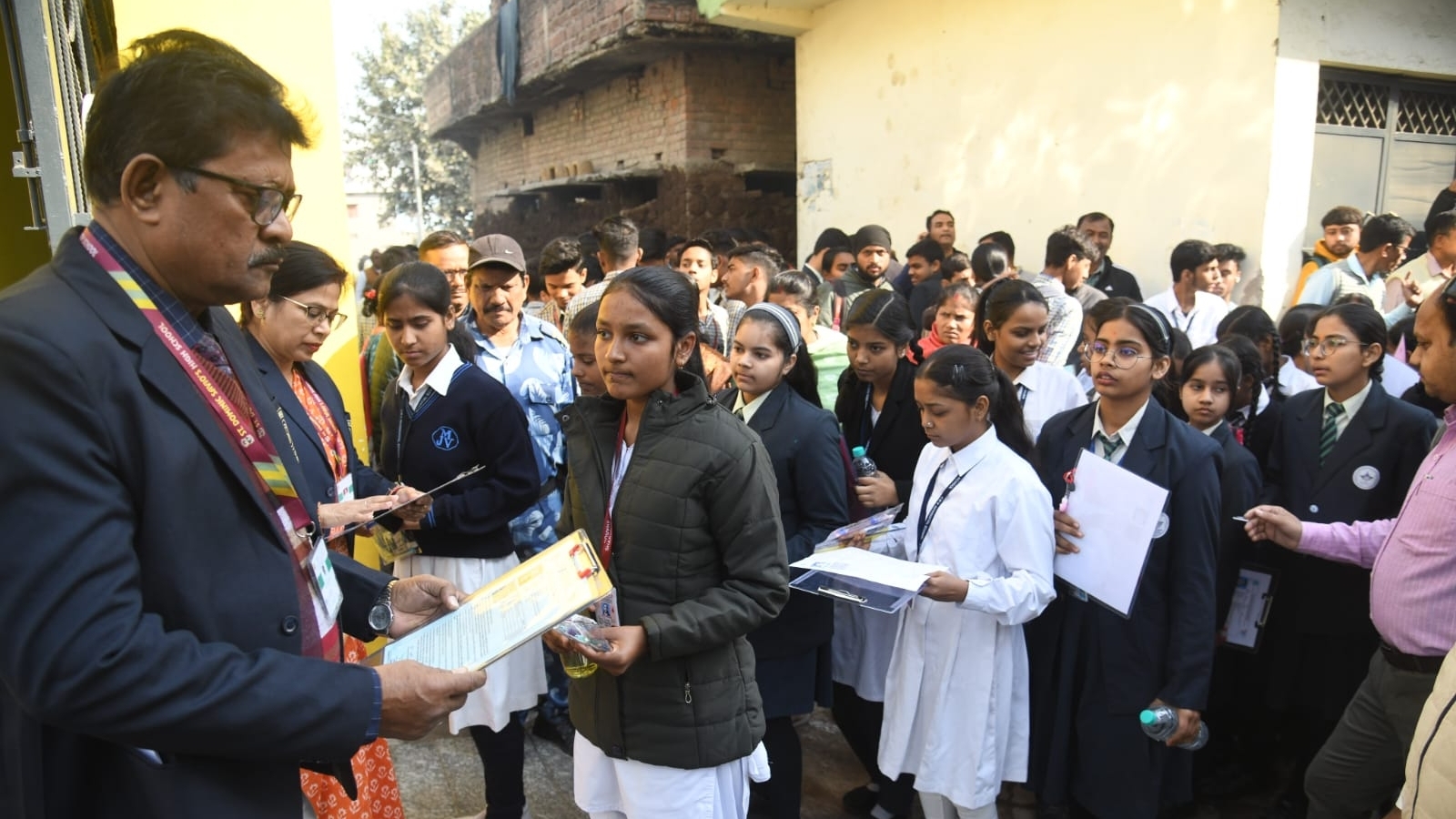
CBSE Class 12 Physics paper analysis: What teachers think about the exam held today
Some Central Board of Secondary Education (CBSE) teachers said the Class 12 Physics exam paper held today was lengthy but agreed that it was a good paper that tested students’ conceptual understanding. Also read: CBSE Class 12 Physics paper analysis live updates.

Surender Puli, PGT Physics Vidyagyan School, Sitapur said it was a lengthy-paper with set 3 being particularly extensive.
“The multiple-choice questions (MCQs) were quite tricky and posed a significant challenge. Section E, consisting of five-mark questions, was relatively straightforward but required considerable time to complete, similar to the three-mark questions in Section C. In Section B, a few two-mark questions were moderately difficult and demanded a deeper level of conceptual understanding.”
His student Geeta said, “In set 2, Section B was slightly lengthy, and Section C focused on concept-based questions, which I enjoyed. Overall, the paper was moderate, and I am expecting good marks.”
Tushar Goel, PGT Physics at Silverline Prestige School, Ghaziabad, said the CBSE Class 12 Physics paper was balanced, and it effectively assessed students’ understanding of key concepts and ability to apply them.
“The paper covered many topics from the syllabus, with a mix of conceptual questions, derivations, and numerical problems”
“The paper sampled various topics, ensuring students couldn’t rely on just a few areas. The questions were generally well-written and easy to understand, reducing the chance of misinterpretations,” he added.
Goel overall found the paper reasonably well-constructed for a fair evaluation of student learning.
Yogita Sharma, PGT Physics, KIIT World School, Gurgaon, shared her in-depth analysis of the CBSE Class 12 Physics paper. She said it followed the pattern of the sample paper provided by the board and had five sections – A, B, C, D and E.
Section A contained 16 MCQs of 1 mark each; Section B contained 5 questions of 2 marks each; Section C contained 7 questions of three marks each; Section D contained 2 case study-based questions of 4 marks each; and Section E contained 3 long questions of five marks each, Sharma said.
She rated the paper moderately difficult which had a “well-structured pattern ensuring conceptual clarity, problem-solving ability, and application-based learning.”
Sharma said numerical questions were manageable, but some required extended calculations, making time management an essential factor.
Also read: CBSE to release draft on board examinations twice a year soon
“Derivations and case-study questions were conceptual, rewarding students who had practised NCERT examples and previous year’s questions. The paper was well-balanced across all sets, maintaining fairness in question distribution.”
Here is the section-wise analysis by Yogita Sharma
Section A: Well-balanced with a mix of conceptual, calculation-based questions, providing in-depth assessment through assertion-reasoning questions.
Section B: Application-based numericals required a thorough understanding of Ohm’s Law, Ampere’s Circuital Law, and Lenz’s Law.
Section C: Most time-consuming. Included derivations, circuit-based questions, and conceptual reasoning. Topics such as Capacitors, Kirchhoff’s Laws, and Ray Optics featured detailed derivation-based questions.
Section D: Case-study questions focused on real-life applications of Capacitors, Semiconductor Electronics. Required analytical and conceptual understanding.
Section E: Direct questions from Current Electricity, Magnetism, and Optics, along with numerical problems that required a strong conceptual foundation. Some numerical problems involved lengthy calculations.
Source link



